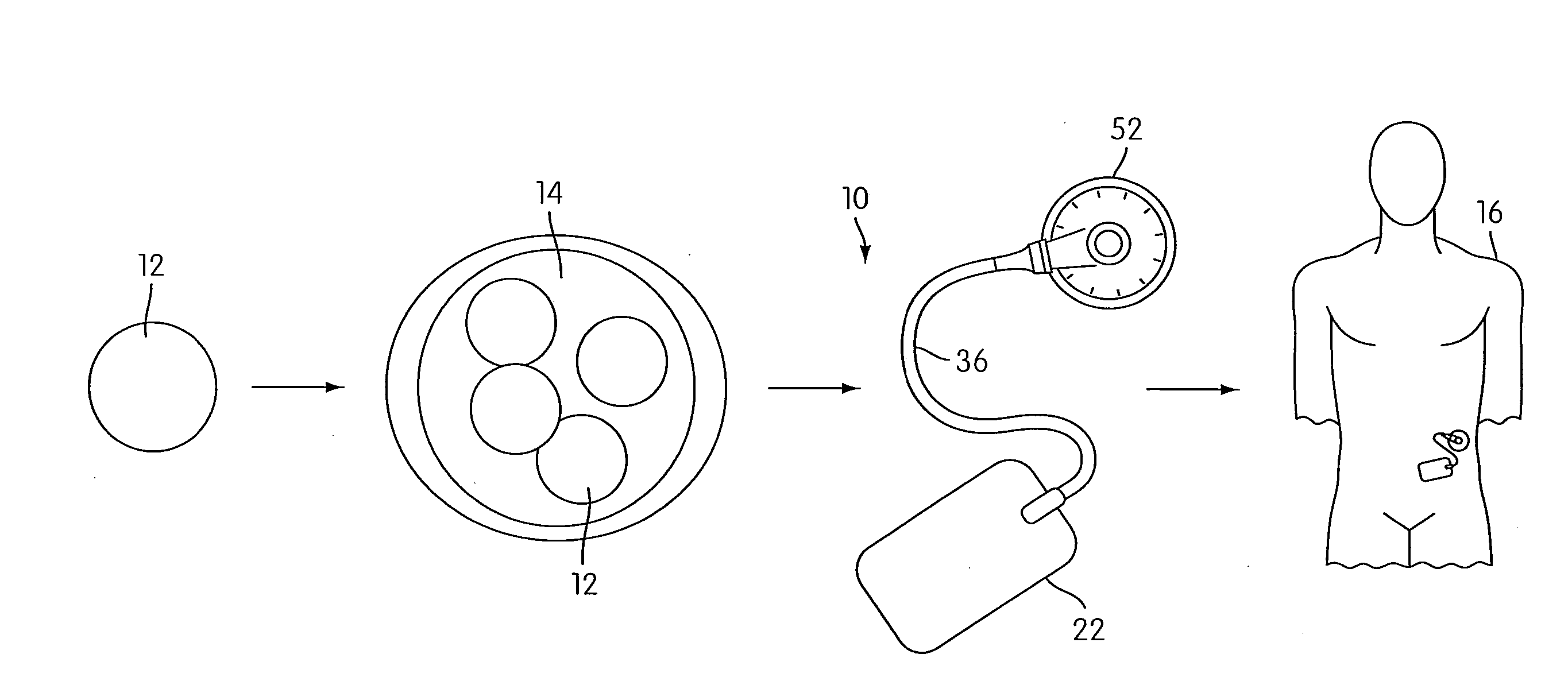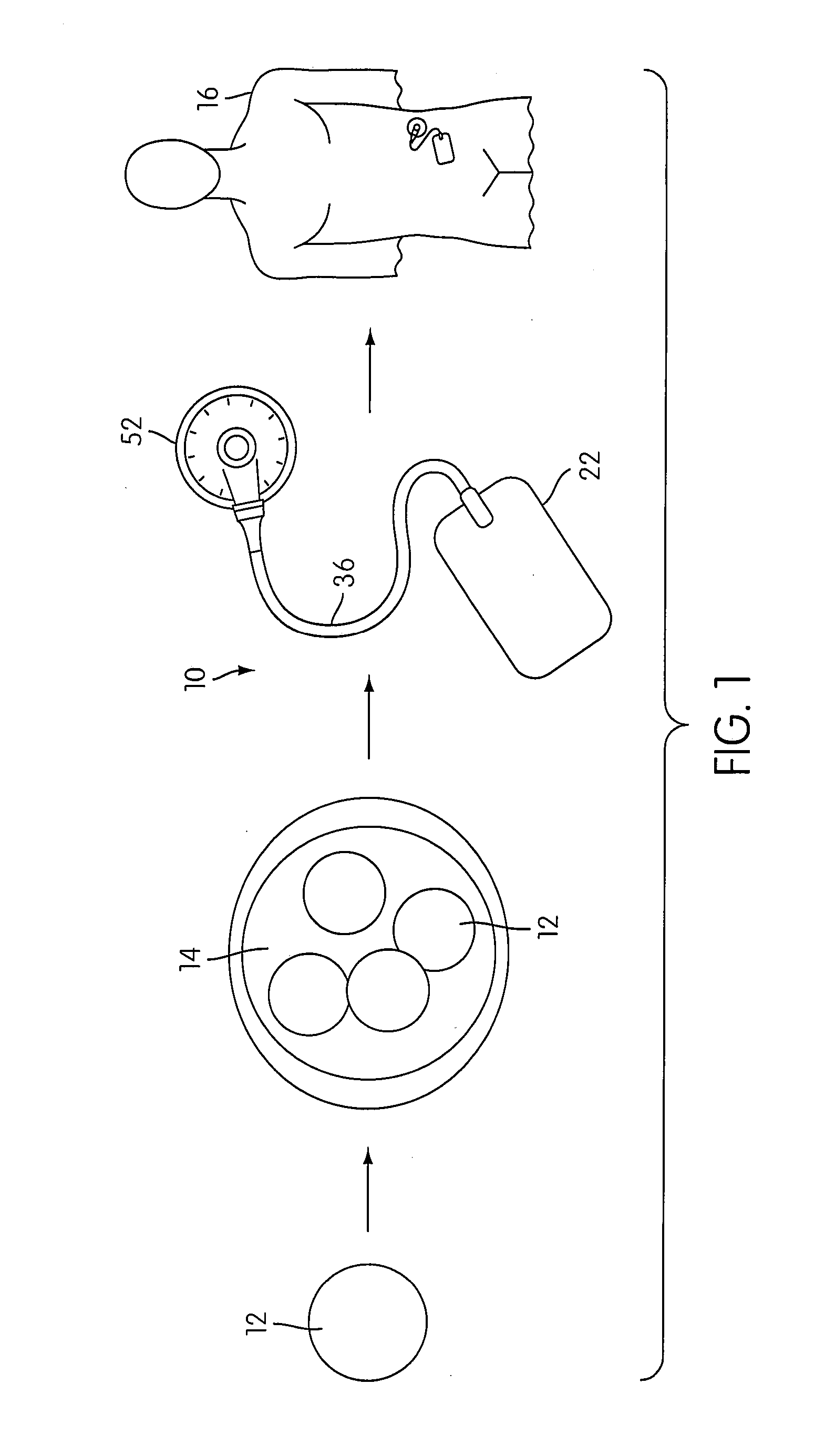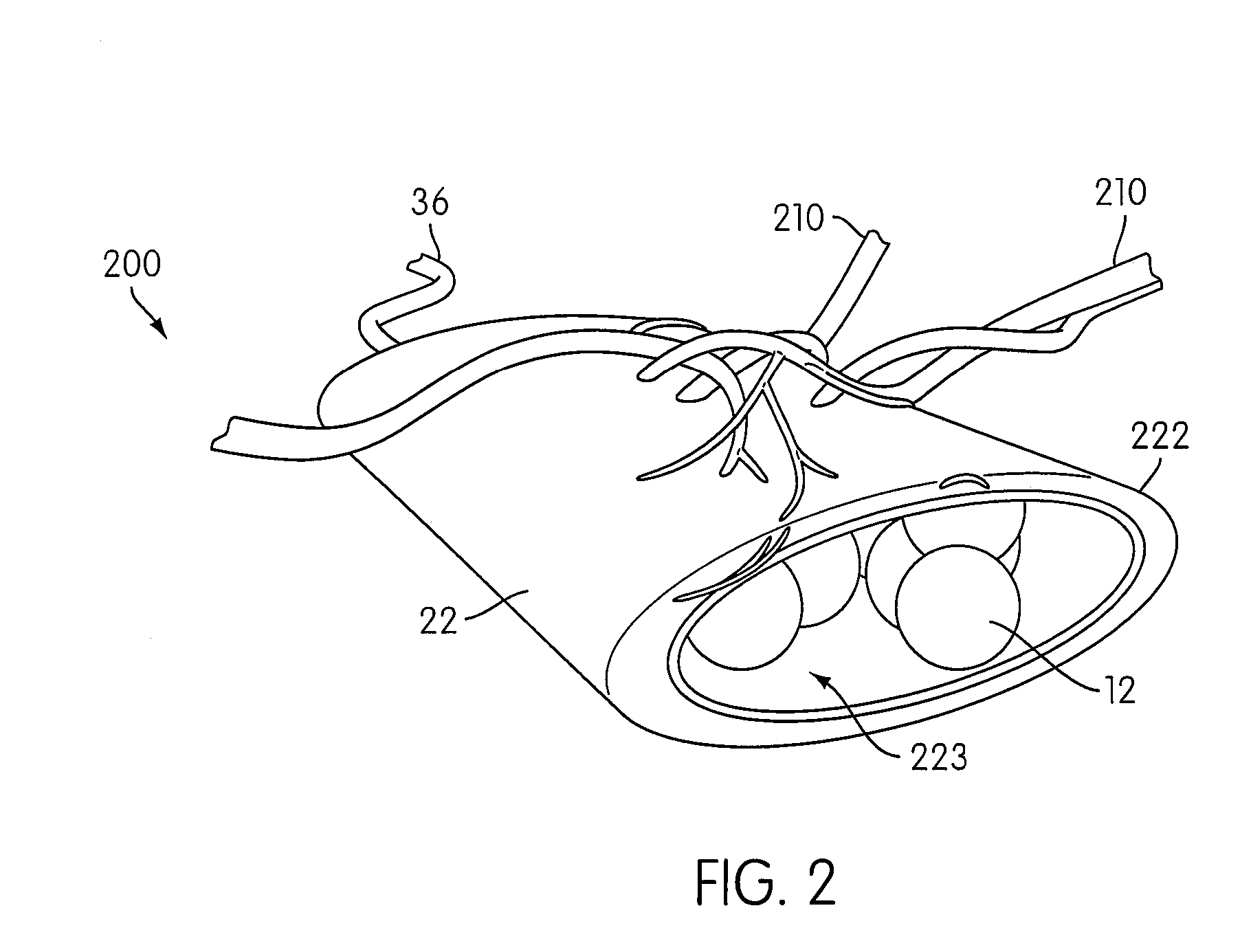Angiogenesis Mechanism and Method, and Implantable Device
a technology of angiogenesis and angiogenesis, which is applied in the direction of prosthesis, peptide/protein ingredients, and metabolism disorders, etc., can solve the problems of pancreas transplantation, absolute deficiency of insulin, and limited success, so as to facilitate vessel formation and facilitate vessel formation
- Summary
- Abstract
- Description
- Claims
- Application Information
AI Technical Summary
Benefits of technology
Problems solved by technology
Method used
Image
Examples
example 1
Preparation and Evaluation of APGS
[0288]A. Preparation of APGS
[0289]Whole blood was drawn from 4 human donors (2 male and 2 female) to give a starting sample of sixty (60) ml of whole blood for each donor, which was then used to obtain generate preparations of normal serum and APGS. The blood was mixed with sufficient sodium citrate to act as an anticoagulant. Sixty (60 ml) of blood from each donor was processed using a Medtronic Magellan™ Autologous Platelet Separator (Medtronic Inc., Minneapolis Minn.) to obtain 6 ml of platelet rich plasma (PRP) from each donor. Approximately 6000 units of thrombin (at 1000 U / ml) was added to the PRP and mixed by repeated pipetting. The thrombin / PRP mixture was allowed to clot for about 15 minutes at room temperature, to generate autologous platelet gel (APG, clotted PRP). The APG was then centrifuged at 13,000 rpm for 5 minutes. The supernatant was removed and saved as autologous platelet gel serum (APGS). A total volume of approximately 6 ml of...
example 2
Silicone Tubing O2 Permeability Experiments
[0319]The capacity for silicone tubing to supply oxygen (O2) was measured by determining the O2 permeability of silicone tubing. Calculated (theoretical) and experimental (actual) flux values were determined, and these values were evaluated in terms of the predicted O2 requirements of islet cells.
[0320]A round-bottom flask was filled to the level of the bottom of the stopper with water (235 ml, i.e., no headspace) and equipped for magnetic stirring. An oxygen sensor was threaded through the stopper and immersed in the water. A sealed silicone catheter (tube) was also threaded into the flask and connected to an external O2 supply. The silicone cathether had a total length of 10 cm in the flask, a wall thickness of 292 microns, and an internal diameter (ID) of 1.204 mm. The flask was then immersed in a water bath at 37° C.
[0321]The water was deoxygenated by purging with nitrogen (N2) until the sensor reading was zero for oxygen, after which t...
example 3
Formation of a PEG-Based Hydrogel and Encapsulation of Cells
[0334]Cells were encapsulated in a PEG-based hydrogel as described below. PEG having an average of 8 arms, at approximately 20,000 g / mol was functionalized with vinyl sulfone (VS) groups to form PEGVS solution, and further modified using a solution of RGD peptide, and crosslinked with dithiothreitol (DTT), to form a hydrogel having a nominal PEG concentration of approximately 10% (m / v), where the ratio of RGD peptide to VS was 50:1, and the ratio of thiol groups (SH) to VS groups was 1:1, in a total gel volume of 50 μl.
[0335]In a first step, pendant groups were added to vinyl-sulfone-functionalized PEG (PEG-VS). Twenty-five (25)μl of PEG-VS was centrifuged at 13000 rpm for 30 seconds, 6.15 μl RGD solution was added to PEGVS, and the mixture was rotary mixed (vortexed) for 3 seconds and incubated for 30 minutes at 37° C.
[0336]In a second step, cells were prepared for encapsulation. The required number of cells (suspending in...
PUM
| Property | Measurement | Unit |
|---|---|---|
| Volume | aaaaa | aaaaa |
| Volume | aaaaa | aaaaa |
| Volume | aaaaa | aaaaa |
Abstract
Description
Claims
Application Information
 Login to View More
Login to View More - R&D
- Intellectual Property
- Life Sciences
- Materials
- Tech Scout
- Unparalleled Data Quality
- Higher Quality Content
- 60% Fewer Hallucinations
Browse by: Latest US Patents, China's latest patents, Technical Efficacy Thesaurus, Application Domain, Technology Topic, Popular Technical Reports.
© 2025 PatSnap. All rights reserved.Legal|Privacy policy|Modern Slavery Act Transparency Statement|Sitemap|About US| Contact US: help@patsnap.com



